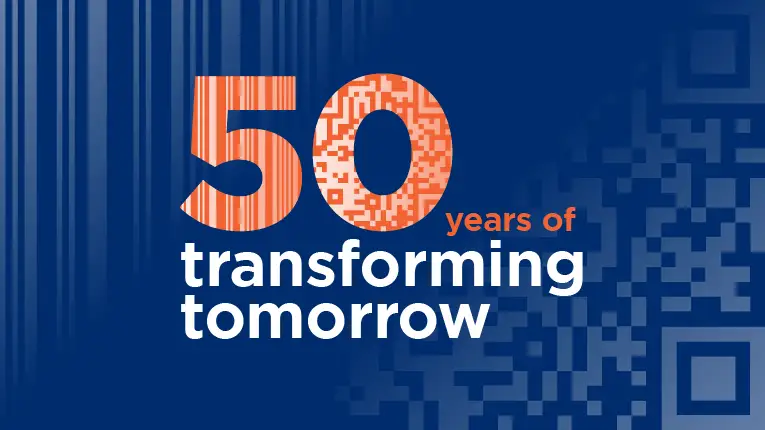50 years ago, on March 31, 1971, the modern economy was born. It sounds like an exaggeration, but it was on that day that executives from the largest companies in commerce got together and developed the Global Trade Item Number, known as the «GTIN».
The GTIN is a barcode number, the most important supply chain standard in history. Today, the barcode is scanned more than six billion times a day and remains one of the most trusted symbols in the world.

It is no exaggeration to say that the development of GTIN laid the foundation for digital global trade. It is truly one of the great stories of international business, an amazing coming together of fierce competitors to solve real business problems.
GS1 recently spoke with one of the protagonists of this historic milestone. Tom Brady, the engineer who designed and installed the scanning system used at Marsh Supermarket to scan the first GTIN barcode in 1974, told us, "From the prospective meetings of GS1's founders to the first scan at Marsh Supermarket, the early 1970s were extremely exciting and challenging. I was honored to be part of something so beneficial to our world, to see companies join forces and come together for the common good. It's time for a new generation of industry leaders to develop new forms of standards that can transform business over the next fifty years."
And we agree: at GS1 we are proud to celebrate this important milestone, but we do so not to look back, but to look forward.
We take this moment to encourage companies to work together again to meet the needs of the 21st century economy. Companies must respond to new consumer needs, and industry must find ways to rapidly adopt new technologies, including big data technologies, the next generations of bar codes.
GS1 standards, like barcodes, continue to help transform the enormous complexity of today's global businesses quickly, efficiently and securely, simplifying all kinds of supply chain processes in virtually every sector around the world. However, as consumers demand more and more accurate product information, it's time to take barcodes to the next level.
Developments in next-generation barcodes (e.g. square barcodes such as QR codes), which can contain much more information, should be used to provide consumers with reliable information and change global commerce in the new century. Their use, for example, can tell consumers whether a product contains allergens, is organic or about its carbon footprint. Ultimately, this gives consumers a higher level of trust and loyalty to the products they buy.
Half a century ago, fierce competitors came together, put aside their differences and changed global trade forever by developing GTINs. Now we have the opportunity and the need to replicate that spirit of collaboration and leadership to meet the needs of the new century.
